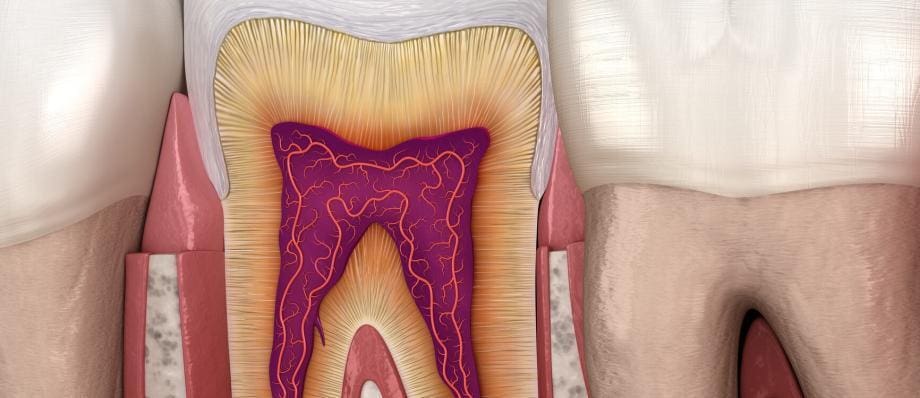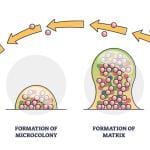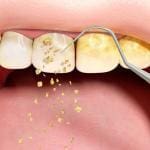Dentin, an integral component of teeth, plays a vital role in maintaining dental health and functionality. As the primary supporting structure of the tooth, dentin provides strength and protection to the delicate pulp and the surrounding enamel. This comprehensive article delves into the anatomy, composition, functions, and sensitivity of tooth dentin, shedding light on its significance in dental care and overall oral health.
Anatomy of Tooth Dentin
Tooth dentin is a calcified tissue layer that forms the bulk of the tooth structure, situated between the enamel and the pulp. It is a mineralized tissue composed of an intricate network of microscopic channels called dentinal tubules. These tubules extend from the outermost layer of dentin, known as the dentinoenamel junction, to the innermost layer called the dentinopulpal junction, where it interfaces with the dental pulp.
The density and arrangement of dentinal tubules vary across different regions of the tooth. In the root portion, the tubules are more numerous and widely spaced compared to the crown, which affects the overall properties and sensitivity of the tooth.
Composition of Dentin
The composition of tooth dentin comprises an organic matrix and an inorganic mineral phase:
- Organic Matrix
- Inorganic Mineral Phase
Organic Matrix
The organic matrix of dentin is primarily made up of type I collagen fibers, which provide the tissue with flexibility and tensile strength. Collagen makes up approximately 90% of the organic content in dentin, and it is secreted by specialized cells called odontoblasts, located in the pulp chamber.
Inorganic Mineral Phase
The inorganic component of dentin consists of hydroxyapatite crystals, which are calcium phosphate salts. These crystals are responsible for providing dentin with its hardness and resistance to wear. The mineral phase represents around 70% of dentin’s overall composition.
The ratio of organic to inorganic components in dentin gives it a unique combination of strength and elasticity, ensuring the tooth’s ability to withstand masticatory forces and other mechanical stresses.
Functions of Tooth Dentin
Tooth dentin serves several crucial functions, contributing to the overall health and longevity of the tooth:
- Support and Protection
- Sensitivity Regulation
- Dentinogenesis
- Secondary Dentin Formation
Support and Protection
Dentin forms the core support of the tooth structure, providing a foundation for the enamel on the crown and cementum on the root. It acts as a cushion against occlusal forces during chewing and protects the sensitive pulp tissue within the tooth.
Sensitivity Regulation
Dentin plays a significant role in the perception of external stimuli, such as temperature, pressure, and chemical changes. The dentinal tubules allow nerve endings to communicate with the tooth’s surface, making dentin a key factor in tooth sensitivity.
Dentinogenesis
During tooth development, odontoblasts secrete dentin, continuously forming new layers throughout life. This process, known as dentinogenesis, helps maintain the structural integrity of the tooth as well as repair any damaged or demineralized areas.
Secondary Dentin Formation
Secondary dentin is a protective mechanism that the tooth employs in response to various factors like aging, attrition, or dental caries. It forms at a slower rate than primary dentin and reduces the size of the pulp chamber over time.
Dentin Sensitivity
Dentin sensitivity, often referred to as tooth sensitivity, is a common dental issue experienced by many individuals. It is characterized by sharp, temporary pain in response to certain stimuli like hot or cold food and beverages, sweet or acidic foods, or even cold air. The sensitivity occurs when the dentinal tubules are exposed due to enamel erosion or gum recession, allowing external stimuli to reach the nerve endings in the pulp.
Causes of Dentin Sensitivity
- Gum Recession
- Enamel Erosion
- Dental Procedures
- Bruxism
Gum Recession
Receding gums expose the root surfaces, which are not protected by enamel, leading to sensitivity.
Enamel Erosion
Acidic foods and beverages, as well as aggressive tooth brushing, can erode the enamel and expose dentin.
Dental Procedures
Some dental treatments like teeth whitening, fillings, or crown placements can cause temporary sensitivity.
Bruxism
Excessive teeth grinding or clenching can wear down the enamel, leading to dentin exposure.
Management of Dentin Sensitivity
- Desensitizing Toothpaste
- Soft-Bristled Toothbrush
- Avoiding Acidic Foods
- Dental Sealants
- Fluoride Treatment
- Mouthguards
Desensitizing Toothpaste
Specialized toothpaste containing compounds like potassium nitrate or stannous fluoride can help reduce tooth sensitivity.
Soft-Bristled Toothbrush
Using a soft-bristled toothbrush and practicing gentle brushing techniques can minimize enamel abrasion.
Avoiding Acidic Foods
Limiting the consumption of acidic foods and beverages can prevent further enamel erosion.
Dental Sealants
Dentists may apply dental sealants to cover exposed dentin surfaces and protect them from external stimuli.
Fluoride Treatment
Fluoride applications at the dental office can strengthen the enamel and reduce sensitivity.
Mouthguards
For individuals with bruxism, wearing a custom-fitted mouthguard can protect the teeth from excessive grinding.
Dentin Repair and Regeneration
The inherent ability of dentin to regenerate plays a crucial role in repairing minor damage and responding to dental injuries. Dentin regeneration can occur through different mechanisms:
- Odontoblast Stimulation
- Pulp Capping
- Tissue Engineering
Odontoblast Stimulation
In response to mild irritation or dental caries, the pulp can initiate the formation of reactionary dentin by stimulating odontoblasts to secrete additional dentin.
Pulp Capping
In cases where the pulp is exposed due to a small cavity or trauma, dentists may perform pulp capping, a procedure where a biocompatible material is placed over the exposed pulp to encourage dentinogenesis and protect the pulp.
Tissue Engineering
Advancements in dental research have explored tissue engineering techniques to regenerate dentin using stem cells and bioactive materials.
Dental Treatments Involving Dentin
Dentin plays a crucial role in various dental treatments and procedures. Some notable examples include:
- Dental Fillings
- Root Canal Treatment
- Dental Bonding
Dental Fillings
When treating dental caries, dentists remove the decayed enamel and dentin and replace it with a dental filling material to restore the tooth’s shape and function.
Root Canal Treatment
Root canal therapy involves removing infected or damaged dental pulp from the root canals and filling them with a biocompatible material to save the tooth.
Dental Bonding
In cosmetic dentistry, dentin bonding agents are used to adhere restorative materials, such as composite resin, to the tooth structure to repair chips, fractures, or discolorations.
Dentin and Dental Disorders
Dentin is not without its share of dental disorders that can affect oral health:
- Dentinogenesis Imperfecta
- Dentin Hypersensitivity
- Pulpitis
Dentinogenesis Imperfecta
As discussed earlier, this genetic disorder affects the formation of dentin, leading to weak, discolored, and malformed teeth.
Dentin Hypersensitivity
Tooth sensitivity, or dentin hypersensitivity, can be a persistent issue in some individuals, impacting their quality of life and oral health.
Pulpitis
Inflammation of the dental pulp, known as pulpitis, can occur due to untreated dental caries or trauma, leading to severe toothache and potential abscess formation.
Future Directions and Research
As dental science continues to evolve, ongoing research aims to unravel new insights into tooth dentin and its role in oral health. Some areas of interest for future research include:
- Dentin Regeneration
- Dentin Sensitivity
- Biomimetic Dentistry
- Genetic Studies
- Dental Biomarkers
- Nanotechnology
Dentin Regeneration
Scientists are exploring various approaches to enhance dentin regeneration, such as stem cell-based therapies and bioactive materials that stimulate odontoblasts to form new dentin.
Dentin Sensitivity
Researchers are investigating novel strategies to combat dentin hypersensitivity, such as developing advanced desensitizing agents and sealants that provide longer-lasting relief.
Biomimetic Dentistry
Inspired by the natural structure and composition of dentin, biomimetic dentistry focuses on developing dental materials and treatments that closely mimic the properties of natural tooth structures, leading to better outcomes and longevity.
Genetic Studies
The genetic basis of dental disorders like dentinogenesis imperfecta is an ongoing area of research, aiming to identify specific gene mutations and potential gene therapies.
Dental Biomarkers
Dentin could hold potential as a source of dental biomarkers for systemic diseases, providing valuable information about an individual’s health and aiding in early disease detection.
Nanotechnology
Advancements in nanotechnology have the potential to revolutionize dental materials, including dentin bonding agents and restorative materials, by improving their strength, adhesion, and durability.
Maintaining Dental Health and Preventing Dentin Issues
Proactive dental care is essential to maintain optimal oral health and prevent dentin-related issues. Some key practices include:
- Regular Dental Check-ups
- Practicing Proper Oral Hygiene
- Dental Sealants
- Limiting Acidic and Sugary Foods
- Using a Soft-Bristled Toothbrush
- Protecting Teeth During Physical Activity
- Regular Cleanings
Regular Dental Check-ups
Routine dental check-ups enable early detection of dental problems, allowing dentists to address issues before they escalate.
Practicing Proper Oral Hygiene
Brushing twice a day with a fluoride toothpaste, flossing daily, and using an antiseptic mouthwash can help prevent dental caries and gum disease.
Dental Sealants
Dental sealants can be applied to the chewing surfaces of molars and premolars to protect against decay.
Limiting Acidic and Sugary Foods
Reducing the consumption of acidic and sugary foods and drinks can help preserve tooth enamel and prevent dentin exposure.
Using a Soft-Bristled Toothbrush
Using a soft-bristled toothbrush and employing proper brushing techniques can prevent enamel abrasion and gum recession.
Protecting Teeth During Physical Activity
Wearing a mouthguard during sports and physical activities can prevent dental injuries that may expose dentin.
Regular Cleanings
Professional dental cleanings help remove plaque and tartar buildup, reducing the risk of dental issues.
Conclusion
Tooth dentin is the robust core of dental health, providing vital support, protection, and sensitivity regulation to our teeth. Its unique composition of organic matrix and inorganic mineral phase gives dentin its strength and flexibility, enabling it to withstand daily chewing forces and protect the sensitive pulp within.
Understanding dentin’s role in dental health is crucial for dental professionals to diagnose and manage dental conditions effectively. Dentin sensitivity, in particular, is a common issue experienced by many individuals, but with proper dental care and treatments, it can be managed and alleviated.
As dental science continues to advance, researchers are exploring new frontiers in dentin regeneration, nanotechnology, and biomimetic dentistry, aiming to improve dental treatments and materials further. By adopting good oral hygiene practices and seeking regular dental care, individuals can maintain their dental health and prevent potential dentin-related issues, promoting a lifetime of healthy smiles.





